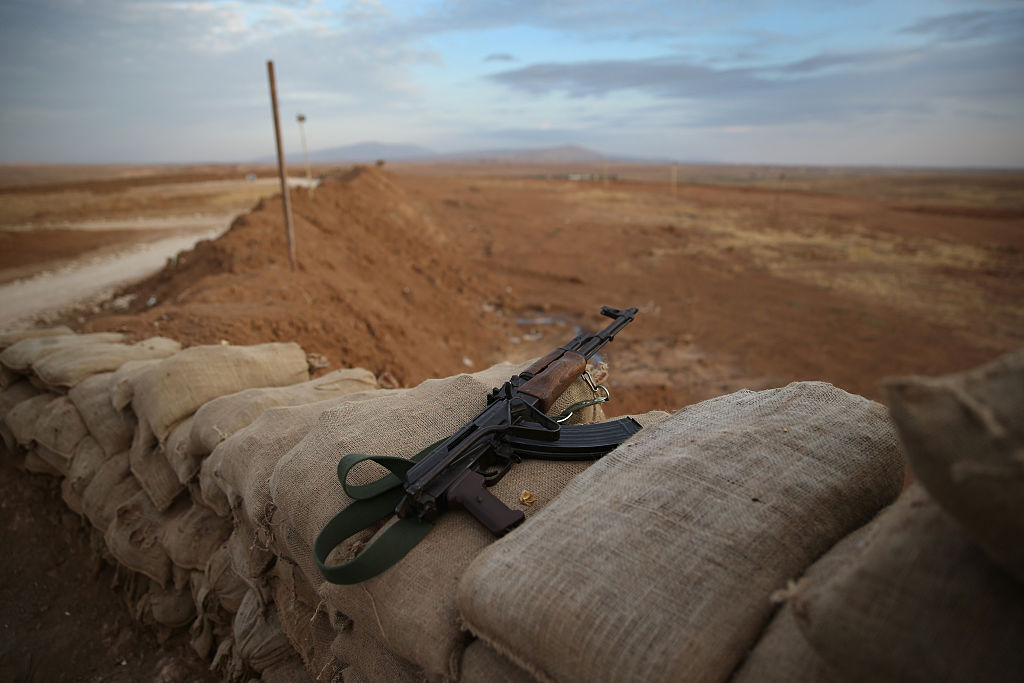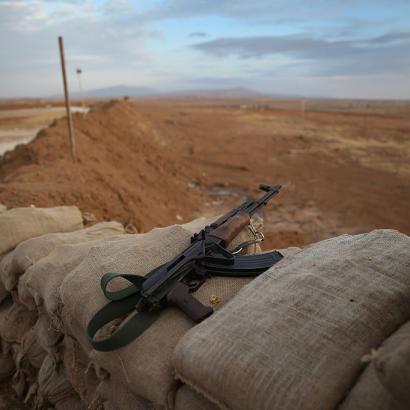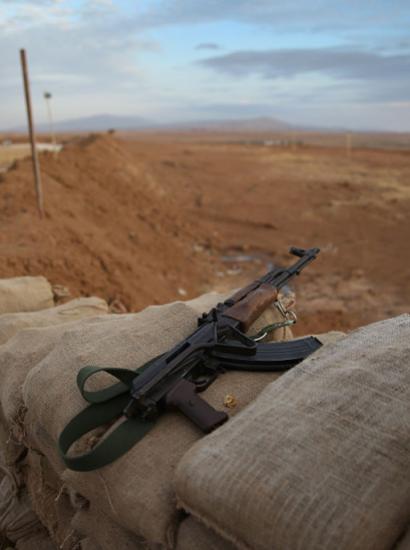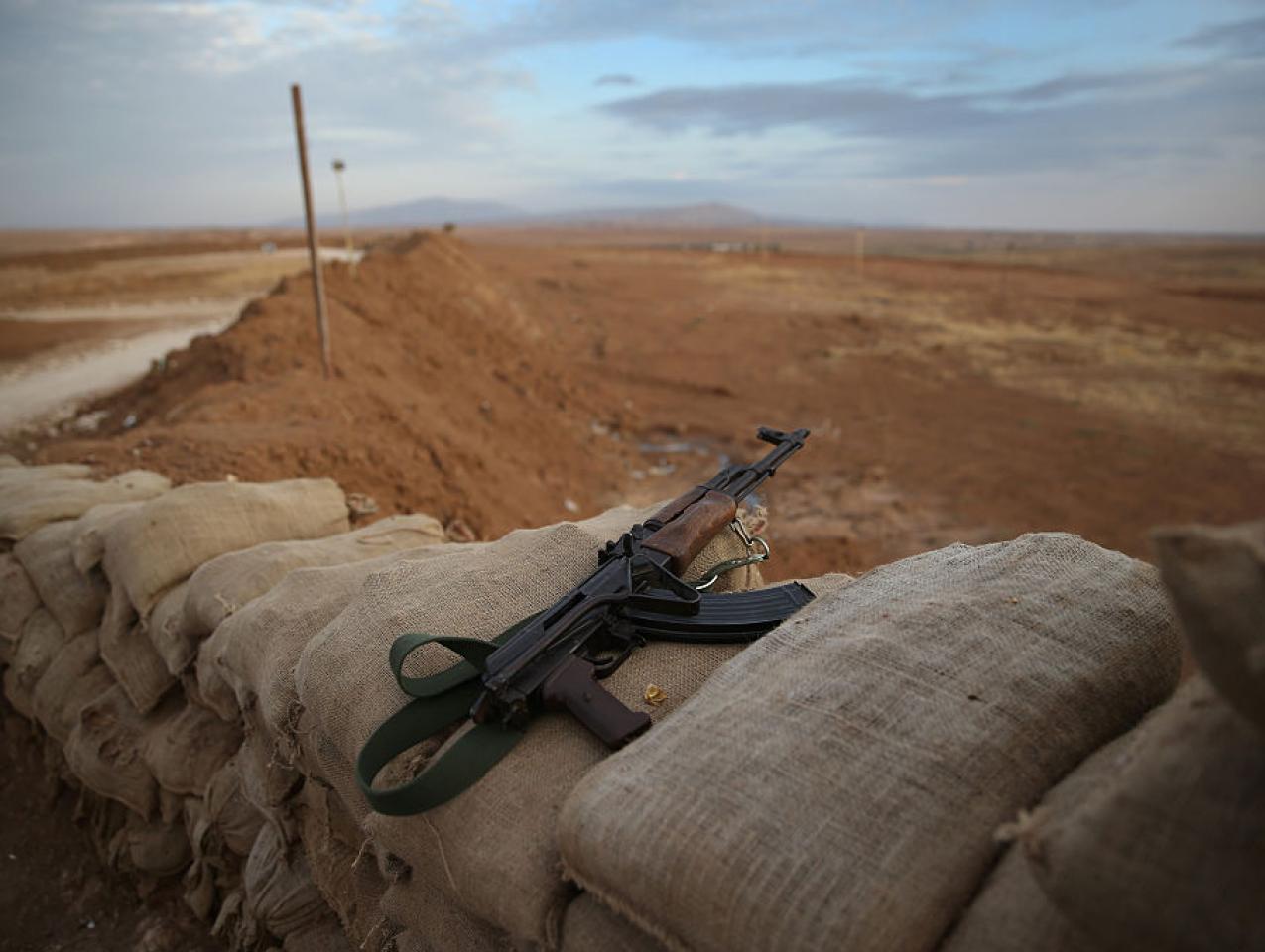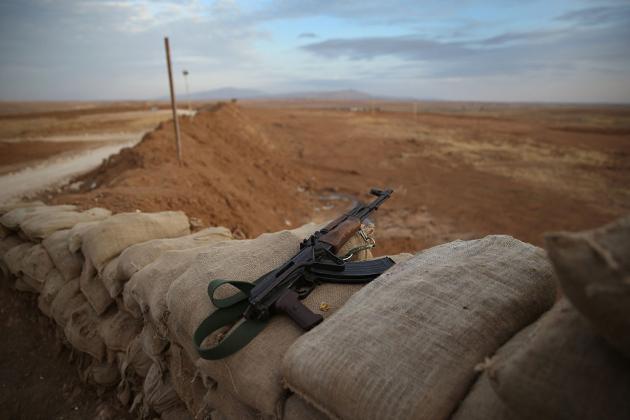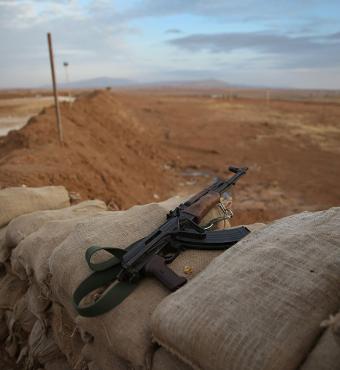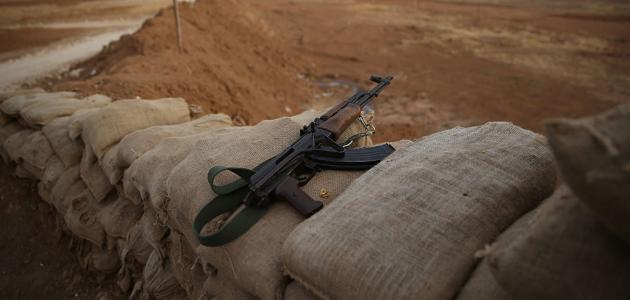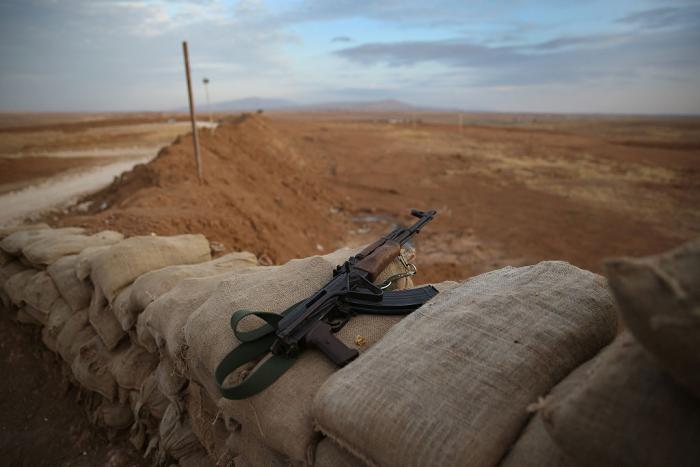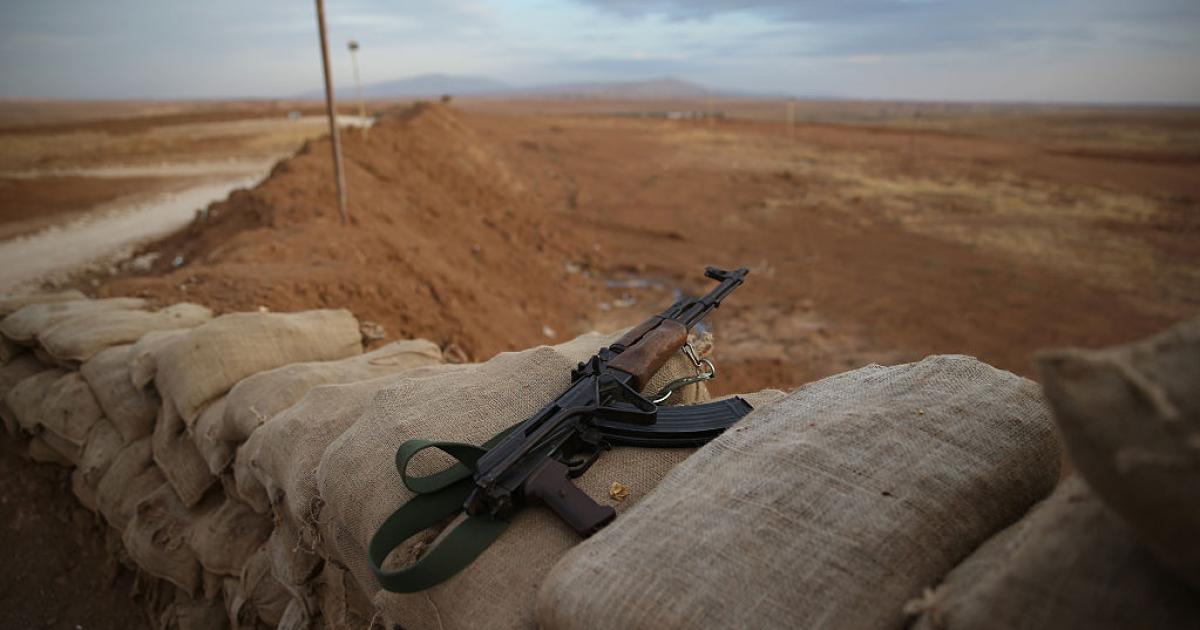- International Affairs
- Middle East
- Revitalizing History
In August 2011, several months after the outbreak of the Syrian rebellion, President Barack Obama called on President Bashar al-Asad to leave. “For the sake of the Syrian people,” he declared, “the time has come for President Assad to step aside.” Yet while the rhetoric was soaring, the groundwork was never laid to achieve the desired outcome. It was largely due to fears that the opposition would be hijacked by radical Islamists that the administration held back, and those fears would become a self-fulfilling prophecy as the al-Qaida-linked Jabhat al-Nusra, now known as Hay’at Tahrir al-Sham (HTS), and its rival the Islamic State ran roughshod over the country’s northern tier. Today, the Islamic State no longer controls territory in Syria but continues to engage in insurgency across Syria’s central region and the northeast. Meanwhile, HTS, which left al-Qaida as part of a strategy of gaining broader acceptance, controls most of the northwestern province of Idlib along the Turkish border.
Together with the Kurdish YPG, which operates in the northeast under the umbrella of the Syrian Democratic Forces (SDF), the Islamic State and HTS are some of the last survivors in the tragic Syrian civil war. While both share a common origin in jihadi militancy, they represent competing ideological visions and pose different challenges for U.S. policy. Each of them, however, envisions a future in which its forces eventually overrun the country and turn Syria into a proper Islamic state governed by the Sharia.
The HTS Vision
Formally announced in January 2012, Jabhat al-Nusra was formed as a front group of the Islamic State of Iraq, which at the time was widely seen as the Iraqi affiliate of al-Qaida. In early 2011, Abu Bakr al-Baghdadi, the leader of the Islamic State of Iraq, dispatched Abu Muhammad al-Jawlani, a Syrian member of his group, to Syria’s north in preparation for armed revolt. Over the next few years, Jabhat al-Nusra surged in popularity as it became one of the opposition’s most potent fighting forces, prompting al-Baghdadi to seek to reassert control by announcing, in April 2013, the dissolution of Jabhat al-Nusra and the expansion of the Islamic State of Iraq to Syria, yielding the new name the Islamic State of Iraq and al-Sham (ISIS). Al-Jawlani resisted, and in a public statement referred the matter to Ayman al-Zawahiri, the leader of al-Qaida, as final arbiter of the dispute. When al-Zawahiri ruled in favor of al-Jawlani, that was the end of ISIS’s association with al-Qaida.
Over the next several years, as ISIS consolidated its hold over much of north and northeastern Syria, Jabhat al-Nusra established itself in the northwest. The latter was hoping to play a bigger role in the opposition—at the time divided into numerous armed Islamic factions—but the affiliation with al-Qaida was complicating that effort. Other groups avoided increased cooperation or alliance with Jabhat al-Nusra out of fear of being sanctioned by the international community or subjected to drone strikes. In 2016, al-Jawlani thus began a complicated process of decoupling his group from al-Qaida, first announcing the establishment of Jabhat Fath al-Sham (“The Front for the Conquest of al-Sham”), which al-Jawlani declared had no ties to any foreign entities, and six months later, in January 2017, announcing the formation of Hay’at Tahrir al-Sham (“The Committee for the Liberation of al-Sham”). While many believed the disaffiliation was no more than a ruse—and indeed it began as something of a ruse—the divorce eventually did take place for real. Al-Zawahiri, who never approved the measure, condemned his erstwhile subordinates for their betrayal. HTS has since cracked down forcefully on the al-Qaida loyalists in its territory, not only by preventing them from operating but by arresting and persecuting them as well.
In the years since its announcement, HTS has grown increasingly nationalist in its rhetoric and aims. Al-Jawlani became more focused on administering the territory under his control, including providing security and services to the four million or so residents in the Idlib area, than in waging jihad. In 2017, he established the Syrian Salvation Government (SSG) as the administrative body in the muharrar, or liberated area. The quasi-government, which has a parliament and is led by a prime minister, has ministries of economic affairs, health, agriculture, and education, while military matters remain the exclusive preserve of HTS. Yet despite his supposedly exclusive military role, al-Jawlani is the dominant force in the area’s politics, often seen in videos discussing economic and agricultural issues on visits around Idlib. In a recent visit to the SSG parliament, al-Jawlani stressed the importance of building up governing institutions as part of the continuing revolution against the Syrian regime. “The idea of the revolution is not a military idea exclusively,” he explained, “but rather it consists in building a Sunni Islamic society and polity that can defend the identity and culture of the people.” Eventually, the institutions being nourished in Idlib would be extended to the rest of Syria. “We must not submit to the idea that we are confined to a small geographical area,” he said, but must focus on the goal of “liberating all of Syria such that the institutions spread across the full expanse [of the state].” Those institutions, he went on, must be prepared to step in immediately in the event that another area falls.
In order to survive in Idlib, not only has al-Jawlani had to abandon al-Qaida and focus on administration, but he has also had to cooperate with his northern neighbor—Turkey. Turkey is a state deemed “polytheist” by most jihadi ideologues, but al-Jawlani knew that he could not afford to alienate Ankara and so has accommodated a greater Turkish presence in the province. Since 2017, Turkey has maintained a series of observation posts and conducted patrols along key transportation routes within Idlib, at one point including Russia in the patrols. HTS acquiesced in the moves. Its religious scholars have defended such dealings with the Turks on grounds of pragmatism, citing the example of the Taliban as an Islamist group that similarly engaged with problematic states out of self-interest.
Meanwhile, al-Jawlani has repeatedly signaled that his group poses no threat to the United States and the West, and has called on the international community to rescind his group’s terrorist designations. “Through our 10-year journey in this revolution,” al-Jawlani told an American journalist in 2021, “we haven’t posed any threat to Western or European society: no security threat, no economic threat, nothing.” The United States has not eased sanctions on HTS despite such protestations, though it has ceased to target al-Jawlani and the HTS leadership, in a way acknowledging that the group poses no terrorist threat to Americans. That might be somewhat reassuring, but it must also be understood that al-Jawlani, who once belonged to Abu Mus‘ab al-Zarqawi’s al-Qaida in Iraq and served under al-Baghdadi, does not claim to have undergone any sort of transformation. This is a man who happily associated with al-Qaida for more than ten years and has expressed no regrets. He claims to have always been against “external operations,” meaning terrorist attacks against Western targets, but at the same time pledged fealty to leaders who were plotting just those kinds of operations.
All this being said, al-Jawlani’s pragmatic turn is still a fact that cannot be denied. It is certainly not denied by others in the jihadi universe, who regard al-Jawlani and HTS as traitors against the true jihadi manhaj, or path. This includes both the supporters of al-Qaida and the Islamic State, who see HTS as having diluted jihad in pursuit of raw power within a nationalist framework. There is no hope, they say, for HTS to expand beyond the tiny slice of northern Syria that it controls. It has compromised its principles, and soon it will be properly rewarded.
The Islamic State Vision
The Islamic State, for its part, was unwilling to compromise to stay in power. In its propaganda, it presents itself as unwaveringly committed to its jihadi principles, unlike the “the apostate militia of al-Jawlani,” which has abandoned jihad and ceased fighting the Syrian regime and its backers at the orders of Turkey. The Islamic State, it says of itself, “has not changed or altered, and has continued fighting the Nusayri regime and those apostate militias and factions that stand in the way of doing so.”
Driven from its last redoubt in Iraq and Syria in March 2019, the Islamic State has since become a persistent insurgent force in both countries. Neither the death of Abu Bakr al-Baghdadi in October 2019 nor that of his successor Hajji ‘Abdallah in February 2022 has had much of an impact. The core leadership of the Islamic State appears to be based in the northwest—al-Baghdadi and Hajji ‘Abdallah were killed in towns in Idlib—but the main theater of operations for the group in Syria is the central Syrian desert known as the Badiya and the areas of the northeast spanning both sides of the Euphrates river. These include the regime-controlled territories west of the river and the SDF-controlled Autonomous Administration located mostly to the east.
In these parts of Syria, the Islamic State operates cells that stage frequent attacks on the SDF, Syrian security forces, and pro-regime militias. Most of these are small-scale attacks such as ambushes, roadside bombs, and assassinations. In any given week they range in number from a handful to more than a dozen. More complex attacks involving multiple cells are rarer. A recent example was the dramatic assault on the Ghuwayran prison in Hasaka in January 2022, when some 50 Islamic State fighters laid siege to the prison that holds thousands of Islamic State militants, seeking to free them. The ensuing standoff lasted more than two weeks and led to the death of hundreds of Islamic State fighters and some 200 SDF forces. The assault underscored the precarious situation of the SDF-run prisons, which one day, if opened, could flood the ranks of the Islamic State’s forces in Syria and Iraq with thousands of fighters.
The Islamic State’s strategy in Syria is one with a long timeline. Rather than seizing and holding territory, the group has concentrated on amassing wealth and recruiting disaffected Syrians as it exploits the fissures in Syria’s ongoing civil war and waits for the right moment to make its move. In the Badiya, it runs training camps and safehouses, while in the northeast, it raises funds through extortion, blackmail, and smuggling. It is particularly keen on undermining the authority of the SDF’s Autonomous Administration, which many of the region’s Arabs view with suspicion and see as only temporary. Terrorist attacks in the SDF serve to show the region’s Arabs that the SDF is not all-powerful and cannot protect them. While counterterrorism operations have been effective to some degree, slowing the pace of Islamic State attacks over the last two years, the group has demonstrated a resilience that cannot be overlooked. Some of the reduction in attacks, particularly in the Badiya, which serves as a safe zone of sorts for the group, is part of a deliberate strategy aimed at keeping a low profile. Most of the attacks on regime forces in the Badiya go unclaimed, so as not to call too much attention to the group’s whereabouts.
In its weekly Arabic newsletter, al-Naba’, the Islamic State has compared its current situation in Syria to the situation that faced the Islamic State of Iraq prior to 2013, when it was forced to seek refuge in the desert but ultimately staged a triumphal return to the cities. “The training camps in the heart of the [Iraqi] desert were the springboard toward the cities and the reemergence of the Islamic State,” read one of the newsletter’s editorials from August 2021. “And you, by God’s leave,” it continued, addressing the Syria-based fighters, “are the plant of another fruit that will mature whensoever God wills and decrees.”
Implications for Policy
Both HTS and the Islamic State are entrenched in Syria and have long-term strategies for growth. HTS aims one day to expand its governing institutions throughout all of Syria, while ISIS hopes that its retreat into the desert will once again result in a return to the cities. Neither aspiration is likely to be realized in the near term, though it is possible that one or both groups could expand its presence and activities in the not-too-distant future, particularly if the lines in Syria’s frozen conflict break down. What can the United States do to prevent this, and, in the case of HTS, should the United States even seek to prevent this?
To begin with HTS, while the group has indeed severed ties with al-Qaida and shows no interest in staging attacks on the West, it has not entirely divorced itself from the larger jihadi universe. For example, many of its associated clerics mourned the death of Ayman al-Zawahiri following his killing in late July and have continued to support al-Qaida insurgent groups around the world, not to mention cheering on the Taliban. The HTS leadership, in other words, still adheres to most aspects of jihadi ideology, even if it has shown greater flexibility than al-Qaida or the Islamic State. Those who swim in such circles are not the kinds of actors that the United States can or should support. It is therefore proper that HTS remain on the U.S. list of designated terrorist organizations, even if the original rationale for placing it there in 2012—its association with the Islamic State of Iraq and by extension al-Qaida—no longer holds. As Aaron Zelin has shown, there are numerous criteria that qualify HTS for inclusion on the list, and keeping it there provides the United States with leverage. The current policy of limited engagement with HTS, combined with support for the humanitarian corridor into Idlib via the Bab al-Hawa border crossing, makes sense.
As for the Islamic State, the current policy of containing the group is predicated on a strong relationship with the SDF, which U.S. forces have advised and trained, and support for its counterterrorism operations. Despite the drawbacks, this too remains the best course. The relationship with the SDF has unfortunately damaged the U.S. relationship with Turkey, which rightly sees its primary component, the YPG, as a wing of the PKK, a U.S.-designated terrorist organization. Turkey routinely threatens to attack the Kurdish forces in the Autonomous Administration, and should it do so, the Islamic State will surely benefit, perhaps staging additional prison breaks. The United States may never be able to placate Turkey as far as the YPG is concerned, but it can alleviate the damage by ensuring that YPG arms and funds do not enter Turkey and by seeking to prevent any potential conflict.
The tragic and tangled situation in Syria today is largely the outcome of failed U.S. policies following the outbreak of the Syrian rebellion in 2011. Yet things could always get worse. The U.S. role in Syria today is ensuring that they do not.







